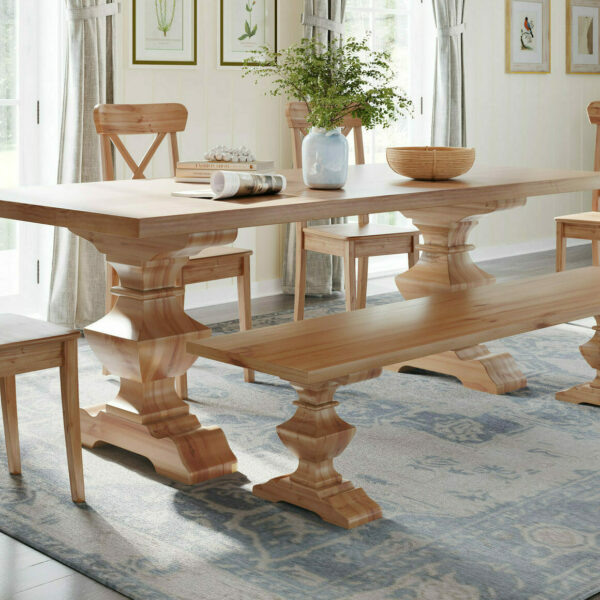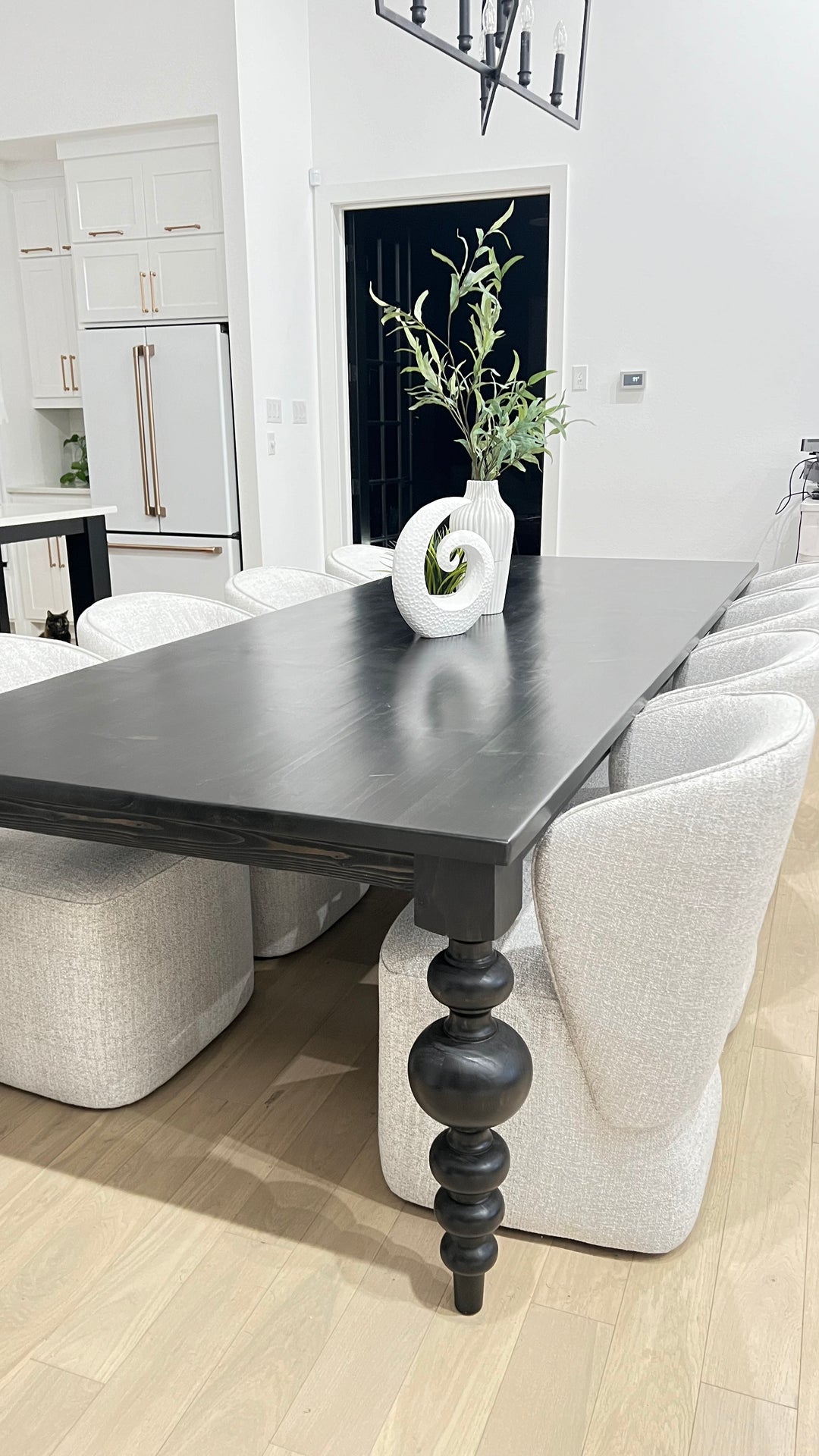How Dining Room Table Legs Can Change the Entire Aesthetic of Your Room
How Dining Room Table Legs Can Change the Entire Aesthetic of Your Room
Blog Article
How to Select the Perfect Dining-room Table Legs for Your Home Decor
Selecting the excellent eating area table legs is a nuanced process that requires cautious consideration of various elements, including your room restraints, visual choices, and sensible demands. The interplay between dimensions, materials, and designs can substantially affect the ambiance of your eating area, making it important to approach this choice methodically.
Assess Your Eating Room
Examining your dining room is vital for choosing the right table legs that complement both appearances and performance. Begin by measuring the measurements of your dining location, including ceiling elevation, floor area, and proximity to various other furniture. This details will help identify the ideal size and elevation of your table, which directly influences the choice of table legs.
Following, consider the design and format of your dining area. For circumstances, an open-concept design may gain from table legs that provide visual lightness, such as slim steel or acrylic options. On the other hand, a much more typical setting might call for tough wooden legs that offer a feeling of durability.
Examine the existing shade combination and materials in your eating area. Integrating the table legs with these aspects creates a natural appearance that improves the total decoration.
Inevitably, a detailed evaluation of your dining space will assist you in making an educated choice, making certain that your table legs not just improve the visual charm but also offer sensible purposes.
Consider Your Style Preferences
When choosing eating room table legs, it is important to assess your individual design preferences, as they significantly affect the general visual of your dining room. Your choice of table legs can either complement or comparison with existing design, making it vital to align them with your recommended interior design motif.
If your home leans towards a modern-day visual, consider streamlined metal or minimalist wooden legs that offer a tidy, clean appearance. For a much more conventional approach, elaborate wooden legs with complex makings can include a touch of beauty and sophistication. Industrial designs benefit from durable, resources such as redeemed timber and metal mixes, showing a sturdy charm.
Furthermore, farmhouse and rustic designs typically favor durable, chunky legs that stimulate a feeling of warmth and comfort. On the other hand, if your décor is diverse, you could choose unusual shapes or a mix of materials to produce aesthetic interest.

Evaluate Product Options
The option of material for dining space table legs plays an essential duty in both resilience and aesthetic allure. Usual products include timber, steel, and composite alternatives, each offering distinct features that can influence the general appearance and long life of your table.
Timber is a timeless selection, known for its warmth and versatility. Hardwoods like oak and walnut provide exceptional strength and can be finished in numerous discolorations to match any design. Softwoods like ache are extra prone to damages and scratches, making them much less perfect for high-traffic locations.
Steel legs, often crafted from steel or light weight aluminum, exude modernity and commercial charm. They are extremely sturdy and immune to wear, making them suitable for households with children or regular gatherings (dining room table legs). Furthermore, metal can be ended up in different colors, improving the personalization possibilities
Composite products, such as MDF or laminate, offer affordability and varied styles. While commonly much less resilient than strong wood or steel, they can still supply a trendy look and are commonly easy to keep.
Eventually, the product you select should line up with your lifestyle, visual preferences, and the level of usage your table will certainly experience.
Determine Height and Size
Choosing the appropriate elevation and dimension for your dining-room table is important for both performance and comfort. The conventional height for dining tables typically varies from 28 to 30 inches, allowing sufficient legroom for most individuals when seated. Nonetheless, it is vital to think about the dimensions of your dining area and the kinds of click here now chairs you plan to utilize.

Moreover, take into consideration the proportions of your dining-room. web link A bigger table in a sizable location can produce a grand ambiance, while a smaller table works well in more intimate settings. Ultimately, the right height and size will certainly integrate with your total decor and boost the eating experience for you and your guests.
Explore Personalization Opportunities

In addition, the style of the legs can be customized to fit different styles, such as rustic, contemporary, or commercial. Conical legs can stimulate a mid-century modern-day feeling, while beefy, block-style his explanation legs might reverberate with standard or farmhouse decoration.
Property owners can also discover color coatings, from natural timber stains to repaint, allowing them to match or comparison with the table top and surrounding decor.
Moreover, leg elevation can be gotten used to fit specific seating arrangements or individual preferences, improving both convenience and performance.
Lastly, one-of-a-kind embellishments, such as carvings or ornamental braces, can additionally personalize the table legs, making the dining experience not simply a statement however a meal piece in the home. By taking into consideration these customization choices, homeowners can produce a dining-room table that genuinely mirrors their uniqueness.
Final Thought
Picking the ideal dining-room table legs requires cautious factor to consider of various aspects, including the measurements of the eating area, style preferences, material toughness, and desired elevation. Customization alternatives further improve the ability to accomplish a natural aesthetic that complements the total decor. By methodically assessing these components, homeowners can guarantee that the picked table legs not just satisfy practical needs but also contribute positively to the dining experience and setting of the home.
Selecting the optimal eating area table legs is a nuanced procedure that needs cautious consideration of various elements, including your room constraints, aesthetic preferences, and useful needs.Analyzing your eating space is important for choosing the right table legs that complement both visual appeals and functionality.When figuring out dimension, gauge the location where the table will certainly be put to guarantee it fits pleasantly, allowing for at least 36 inches of clearance around the table for simple motion. A bigger table in a sizable location can create a grand setting, while a smaller sized table works well in even more intimate setups.Choosing the optimal eating space table legs calls for cautious consideration of various variables, consisting of the dimensions of the dining space, design choices, product sturdiness, and wanted elevation.
Report this page